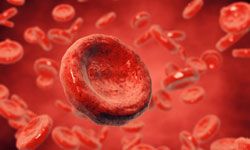CLR 131 Elicits Notable Responses in Select Relapsed/Refractory B-cell Malignancies
In the phase II CLOVER-1 trial, the small-molecule phospholipid drug conjugate CLR 131, achieved high response rates in patients with relapsed/refractory multiple myeloma and relapsed/refractory non-Hodgkin lymphoma, meeting the primary efficacy end point of the study, according to a press release from Cellectar Biosciences, developer of the agent.

In the phase II CLOVER-1 trial, the small-molecule phospholipid drug conjugate CLR 131, achieved high response rates in patients with relapsed/refractory multiple myeloma (MM) and relapsed/refractory non-Hodgkin lymphoma (NHL), meeting the primary efficacy end point of the study, according to a press release from Cellectar Biosciences, developer of the agent.
CLOVER-1is an open-label, multicenter, study that is investigating CLR 131 in patients with select relapsed/refractory B-cell malignancies.
In 80 patients, treatment with CLR 131 led to an overall response rate (ORR) of 34.5% over all therapeutic doses among patients with MM and an ORR of 42% among patients with NHL. In subgroups of patients with lymphoplasmacytic lymphoma (LPL) and Waldenstrom macroglobulinemia (WM), the ORR was 100%. In addition, tumor reduction was observed in 76.7% of patients with MM. These results may indicate a potential to improve existing response rates in these patient populations, Cellectar notes. The company has since expanded the study to test a two-cycle dosing optimization regimen of CLR 131.
“The data reported today are very promising and we believe the product profile for CLR 131 can improve further with the administration of a second cycle. These results are even more impressive considering the challenging patient population tested, as all were heavily pre-treated with the vast majority being refractory to their most recent therapy,” said James Caruso, president, and CEO of Cellectar Biosciences. “Based upon these compelling data and the need for new and innovative treatment options for patients, we plan to execute upon a well-defined and approvable regulatory path forward in a prioritized hematologic indication. We hope that this potentially first-in-class PLE-targeted radiotherapeutic will provide a new and meaningful treatment option for patients living with multiple myeloma and/or NHL.”
In terms of safety, cytopenias were most commonly observed in the study participants with relapsed/refractory MM. The most common grade ≥3 adverse events (AEs) were thrombocytopenia (65%), neutropenia (41%), leukopenia (30%), anemia (24%) and lymphopenia (35%). There were no cases of neurotoxicity, cardiotoxicity, infusion site reaction, peripheral neuropathy, allergic reaction, cytokine release syndrome, keratopathy, renal toxicities, or changes in liver enzymes. Among patients with relapsed/refractory NHL, the safety profile observed with CLR 131 was the same, except these patients experience fewer cytopenias.
The agent also showed promise in a subgroup of patients with diffuse large B-cell lymphoma (DLBCL). Patients in this group had a 30% response rate and 1 patient achieved a complete response, which was ongoing at the time of data cutoff. Investigators noted a response rate of 33% in patients with chronic lymphocytic leukemia (CLL), small lymphocytic lymphoma (SLL), and marginal zone lymphoma (MZL). Of the 2 patients in the study who were diagnosed with mantle cell lymphoma, the best response observed was stable disease.
In CLOVER-1 patients received either a single dose, multiple-dose, or fractioned dose of CLR 131. The primary end point of the study was clinical benefit rate, and the secondary end point was preliminary efficacy.
Patients were eligible to enroll in the study if they had a histologically or cytologically confirmed diagnosis of MM, CLL/SLL, LPL, MZL, WM or DLBCL. Patients were required to have an ECOG performance status of 0 to 2, a life expectancy of at least 6 months and have adequate lab values. Patients with MM were required to have progression disease and at least 2 prior lines of therapy, 1 of which must have been an approved proteasome inhibitor. The study excluded individuals who had previous anti-cancer therapy within 2 weeks of initial CLR 131 infusion and those who had prior radiation therapy, chemotherapy, immunotherapy, or investigational therapy within 2 weeks of eligibility-defining bone marrow biopsy. Patients were also excluded due to certain toxicities and commodities that may have interfered with treatment.
“For patients who have failed the current standard of care treatments for any of these indications, there is a need for additional treatment options,” said lead study investigator Sikander Ailawadhi, MD, Division of Hematology/Oncology, Department of Internal Medicine, Mayo Clinic, Jacksonville, Florida. He added, “These data are impressive, especially in these very difficult to treat patient populations. CLR 131 offers a very attractive safety and efficacy profile.”
Reference:
Cellectar Biosciences announces clr 131 achieves primary efficacy endpoints from its phase 2 clover-1 study in relapsed/refractory b-cell lymphomas and completion of the phase 1 relapsed/refractory multiple myeloma dose escalation study [news release]. Florham Park, New Jersey; February 19, 2020. https://bit.ly/2V4OaZD. February 19, 2020.